The first serial supersonic bomber Convair B-58A Hustler
Convair B-58 bomber had a very big influence on the development of the American aviation industry. For the first time in practice in the United States, it was possible to test a systematic approach in managing the program for creating an aircraft. At the same time, Convair acted as the main contractor, who was responsible for managing the development and integration of all (except the engines) components of the aircraft. In addition, a huge number of industrial enterprises and firms took part in the creation of the aircraft. At the beginning of 1961, their number reached 4926 (in 44 states). The scale of the work is very large, even by today's standards. The costs of the program turned out to be record-breaking, which, taking into account the release of 116 bombers, exceeded $ 3 billion. The American press of those years wrote that the Convair B-58A bomber was collected from pure gold.
Description of construction
The supersonic bomber was made according to the “tailless” scheme and had a mid-level delta wing of small elongation and large sweep. For its class, the aircraft was distinguished by its small size: length - 29,5 meters, height - 8,9 meters, wing span - 17,3 meters. The provision of high flight speeds forced the designers to develop a unique airframe design, practically the entire surface of which was made of three-layer glued aluminum structures. This made it very smooth and provided a good streamline. In places subject to increased heat, the skin was made of steel panels, and the gluing was changed for soldering. If necessary, all the trim from the aircraft could be removed. In this case, the weight of the structure was only 16,5% of the bomber's take-off weight.
The aircraft was equipped with 4 turbojet engines J79-GE-5 manufactured by General Electric, which developed thrust at maximum speed - 5400 kgf, and in the afterburner mode - 7070 kgf. The fuel was located in 5 internal tanks, as well as in outboard containers (containers of type TCP contained 14 705 liters, and MB-1 - 15 791 liter). To balance the bomber, when the sound velocity passed or when the container was dropped, fuel could be pumped into the tail balancing tank. In this case, the aircraft was originally equipped with a system for refueling in the air of the "flying rod" type.
Separate history there was a wing of the plane. For its time, the wing of the Convair B-58A Hustler bomber had a very progressive aerodynamic layout, including a conical twist. The latter not only solved the balancing problems, but also made it possible to increase the flight range and somewhat reduce the inductive resistance. Since the internal volume of the wing was used to locate fuel reserves, the aerodynamic heating of the wing skin during flights at supersonic speeds became a significant problem. In the case of heating the fuel could be his loss due to evaporation, as well as blockage of pipelines or disruption of the fuel transfer systems to balance the machine.
On this basis, special recommendations for the operation of the bomber were prescribed. After taking off, the pilot had to quickly gain altitude before reaching the cold layers of the atmosphere, and also imposed a limit on the duration of the flight at supersonic. At low and medium altitudes, the pilot sometimes had to slow the aircraft down to a speed of M = 0,9 in order to reduce the wing temperature. In order to avoid heating the fuel before making the departure, it was recommended to put the bomber in the shade, use special heat insulating covers and even resort to cooling the fuel itself before refueling it into the bomber. In parts for “Hastlerov” even special canopies were constructed in the form of houses, which became one of the business cards of the airfields on which B-58 were based.
The bomber's chassis was distinguished by unusually high racks, which made it possible to hang a huge container with weapons and fuel under the fuselage. The main eight-wheel landing gear retracted into the wing, and the two-wheeled front support - in the fuselage. At the same time, in order not to hurt the hanging container, the front desk was originally folded in half. For the main landing gear, the wing was not thick enough, and it had to be increased in the area of the landing gear niches, forming a wedge-shaped influx from above.
B-58A bombers were almost always used with an external suspension under the fuselage. In this case, the following could be suspended: 1) MC-1C - a guided missile with a fluid engine, which had an inertial guidance system. This rocket could be equipped with either a nuclear warhead or warhead with a charge of ordinary explosives. The range of the launch of the rocket depended on the height of the aircraft at the moment of separation of the UR from the fuselage and ranged from 16 to 257 kilometers. In order to launch at a maximum range, the pilot was forced to gain greater flight altitude, which made the bomber a very good target for modern enemy air defense systems. 2) MB-1C - free-fall aerial bomb or ballast to improve the flight characteristics of the aircraft. This container was used in the first years of operation of the bomber. 3) TCP is a special “two-component container”. One part of the outboard container contained the Mk53 bomb, the other - the fuel reserves. There were two types of similar containers: BLU2 / B1 and BLU2 / B2, from each other they differed in size and weight. At the same time, the MC-1 could also be hung on the bomber - a container with reconnaissance equipment or 4 nuclear bombs Mk43 of megaton capacity.
For the defense of the rear hemisphere of the bomber in its tail was located six-barreled 20-mm automatic gun M-61, which had a remote control. At the same time on board there were also means of electronic countermeasures to the controlled arms likely opponent. For all defensive weapons and EW equipment, a separate crew member was responsible — the operator. The defensive EW complex of the B-58 bomber included: AN / ALR 12 station with four antennas providing all-round visibility. It was intended to warn about the radar exposure of the aircraft. This station automatically controlled the emission of dipole reflectors. Ten packages with them were located in the upper wing fairings of the niches of the main landing gear. Also on board there was a station for reconnaissance and jamming and equipment for countering guided missiles with thermal targeting systems.
The crew of the bomber consisted of 3-x people who were placed in a single sealed cabin one after another, the crew cabin was equipped with air conditioning system. The pilot was in the first compartment, in the second - the navigator-scorer, in the third - the operator of defensive weapons. The seats of all crew members were ejected. Each of the three compartments was closed by its opaque lantern. The compartments of the navigator-bombardia and the defensive weapon operator had two small rectangular windows in the sides of the hull, so that the crew members did not experience claustrophobia.
Machine records
12 January 1961, Major G. Doichendorf, was able to set a Connair B-58A Hustler bomber flight record for 2000 km on a closed route with a short lap distance, while achieving an average speed of 1708,8 km / h. Two days later, the aircraft under the command of Major G. Konfer exceeded the flight record for 1000 km, while reaching an average flight speed - 2067,57 km / h. And May 10 of the same year, Major E. Murphy won the prize, which was established by Louis Bleriot in 1930 year. He became the first pilot to fly at a speed of more than 2000 km / h in 30 minutes. Six days later, Major V. Payne and his crew successfully completed the flight from Carswell to Paris, setting a record flight time from Washington - 3 hours 39 minutes 49 seconds and New York - 3 hours 19 minutes 51 seconds. And October 16 1963, Hustler set a record for the duration of the flight at supersonic speeds - 5 hours, flying from Tokyo to London for 8 hours 35 minutes, while the aircraft took five refueling in the air.
Aircraft service
The first B-58A bombers began to enter service with US strategic aviation as a carrier of medium-range nuclear weapons even before the completion of the entire test program in August 1960. The first new aircraft began to master the pilots of the 43-th bomber wing. While the aircraft was being refined, the staffs were developing options for its combat use. It was originally planned to create three wings, deploying them at the European theater of operations. The combat radius of these bombers allowed them to strike at military targets and targets on the territory of the USSR right up to the Ural Mountains. The main task of the crews of the B-58A supersonic bomber was to be the destruction of objects of the Soviet air defense system, its decommissioning could open the way for the heavy subsonic B-52 and B-47 bombers.
At the same time, the first year of operation of B-58 bombers in combat squadrons demonstrated that these aircraft are far from perfect. Pilots often complained about the complexity of piloting an aircraft and the low reliability of some of its systems. The command of US strategic aviation, realizing that, apparently, it would not be possible to significantly improve the performance of the aircraft, decided in 1961 in the year to limit the deployment of two bomber wings: the 43 and the 305. The last three aircraft were delivered to the USAF 26 in October 1962 of the year, on which the release of the aircraft was completed.
In total, 1956 B-1962A and TB-116A bombers were assembled from 58 to 58 years, which were actively exploited until the 1969 year. Pilots to these aircraft did not feel much love. During testing and operation, 26 bombers were lost (22,4% of all vehicles produced) - this is a very high loss rate for peacetime. One of the bombers crashed in 1961 during a demonstration flight at the famous Paris Air Show in Le Bourget. Despite the fact that throughout the entire period of operation of the machine was carried out modernization of the systems and equipment of the aircraft, the B-58A Hustler quickly became obsolete and, in the end, was removed from service with the US Air Force. Already 16 January 1970, the last two supersonic bomber B-58A were deposited.
Aircraft flaws
The B-58 bomber could not hold out for long in the US Air Force and repeat the record of its "colleague" B-52. Already in 1970, the last aircraft Convair B-58A Hustler were withdrawn from the Air Force. The aircraft had enough cons. One of the main ones was the limited flight range. And this is despite the fact that in the bomber take-off mass, fuel accounted for about 60%. At subsonic airspeed without performing aerial refueling, the plane could cross the 7550 km. This figure did not satisfy the TZ, according to which the radius of action should have been 4260 km in the presence of a supersonic flight segment of 370 kilometers in length. Under normal operating conditions, without refueling, the B-58 could fly by supersonic a maximum of 560-800 km.
The aircraft had a very dense internal layout. For this reason, access to various units during ground handling was greatly hampered, and the technicians themselves called the B-58 a “nightmarish” aircraft. For example, one of the rather often replaced radar elements was removed only after lifting with the help of a winch from the cabin of the rescue capsule. After replacing the element, the capsule was returned to its place, but if the radar did not work after that, the whole procedure was repeated again. To change the damaged elements of the skin, the bomber had to be put on the slipway, since almost all the panels of its fuselage were power, and the removal of any of these panels threatened with a loss of structural strength.
Being on the ground, with the internal fuel tanks completely filled with fuel, the bomber had permissible alignment only with the container suspended, without it the car simply “crouched” on the tail. For this reason, before removing the outboard container from the aircraft, it was necessary to drain the fuel from the internal tanks and vice versa, full refueling of the aircraft with fuel was not allowed until the container was suspended. In its absence, in order to prevent the aircraft from tipping over onto the tail, a counterweight 2,8 tons of weight was attached to the front suspension mounting or to the node in the niche of the nose landing gear.
Due to the difficulty in operating and piloting the bomber was demanding of the qualifications of pilots and ground support personnel. These requirements were among the highest in the US Air Force. The combatant pilots for this aircraft were selected only on the personal recommendation of the commander of the wing and should have had at least 1000 hours of flight time. Of them at least 500 hours they had to fly off the commander of the crew operating multi-engine jets (B-47, B-52, KS-135). During the refresher training, every B-58 pilot had to work on 30 simulators for hours and collect 90 flight hours. In addition, due to the lack of space in the cockpit in the US Air Force, there were restrictions on the height and weight of the pilots for the B-58.
One of the drawbacks of the Hustler was also the clearly unsatisfactory forward-down view from the pilot's cockpit, which was especially negative during the take-off and landing. Approximately ten seconds before touching the ground, the pilot completely lost sight of the center line of the runway and drove the bomber only by instrumentation and, using the side landmarks.
With such a set of flaws, a huge price and difficulties in operation, the B-58 bomber, devoid of serious reserves for further improvement and intended solely for delivering nuclear strikes from high altitudes with high subsonic or supersonic flight speeds, had no chance to remain in the ranks for a long time. At that moment, a trend was beginning to take shape on multi-purpose multi-purpose aircraft capable of flying at low altitudes.
Aircraft Convair B-58A Hustler at Pima air museum, Tucson, Arisona, photo from blog igor113.livejournal.com
Flight specifications of the Convair B-58A Hustler:
Overall dimensions: length - 29,5 m, height - 8,9 m, wing span - 17,3 m, wing area - 143,31 m2.
Empty weight - 25 201 kg.
Maximum take-off weight - 80 240 kg.
The power plant - 4 TRD J79-GE-5A / B, the load - 5400 kgf each, afterburner - 7070 kgf.
Maximum flight speed - 2120 km / h
Cruising flight speed - 980 km / h.
Practical range - 7600 km.
Practical ceiling - 19 300 m.
Crew - 3 man (pilot, navigator-scorer, defensive weapon operator).
Armament: six-barrel 20-mm gun M61 Vulcan (1200 shells), up to 8800 kg bomb load.
Information sources:
http://www.airwar.ru/enc/bomber/b58.html
http://www.krasfun.ru/2014/07/strategicheskij-bombardirovshhik-b-58-hustler-ssha
http://www.airbase.ru/hangar/usa/convair/b/58/index-t.htm
http://worldweapon.ru/sam/b58.php
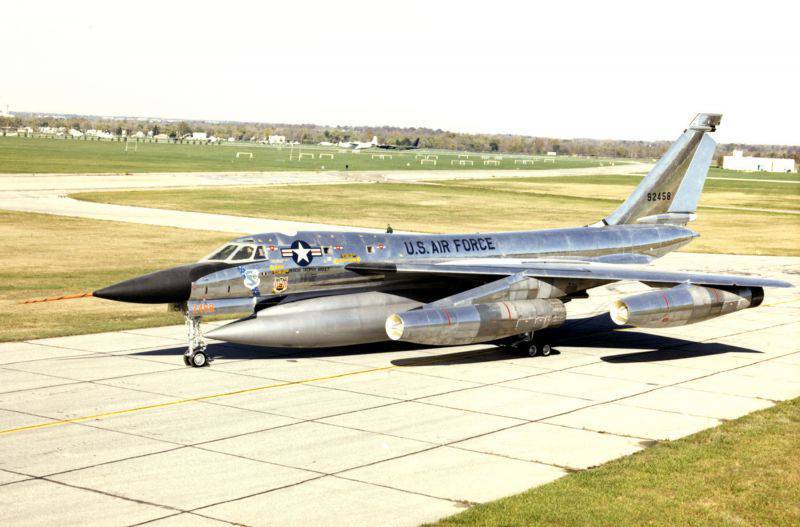
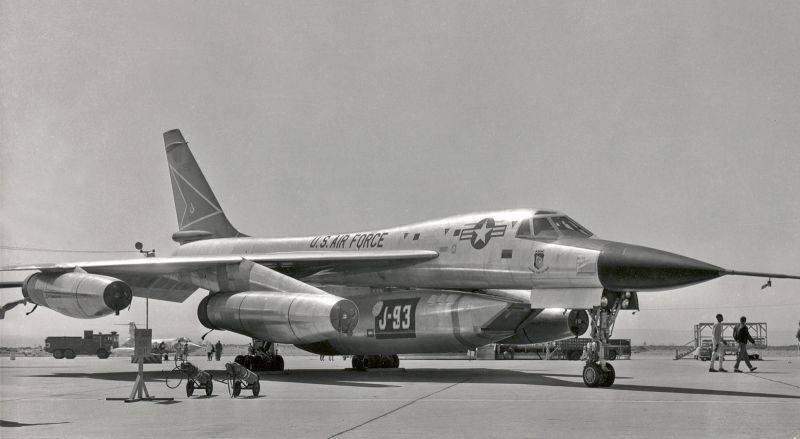
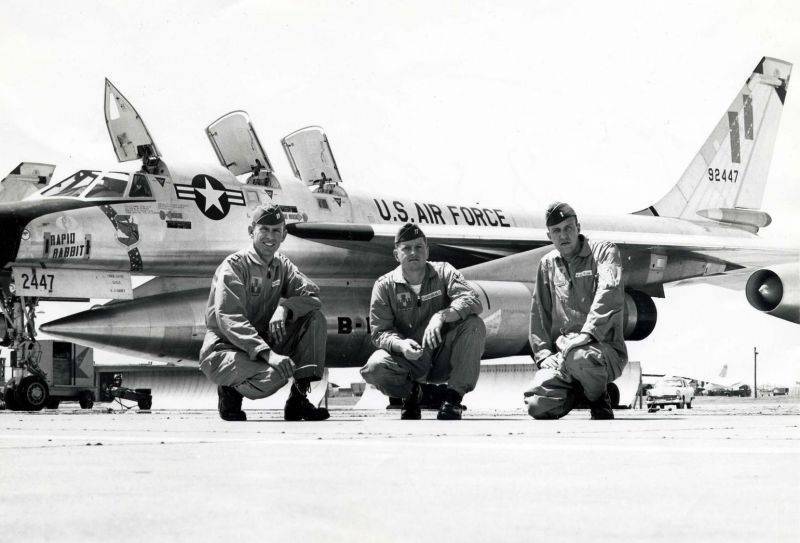
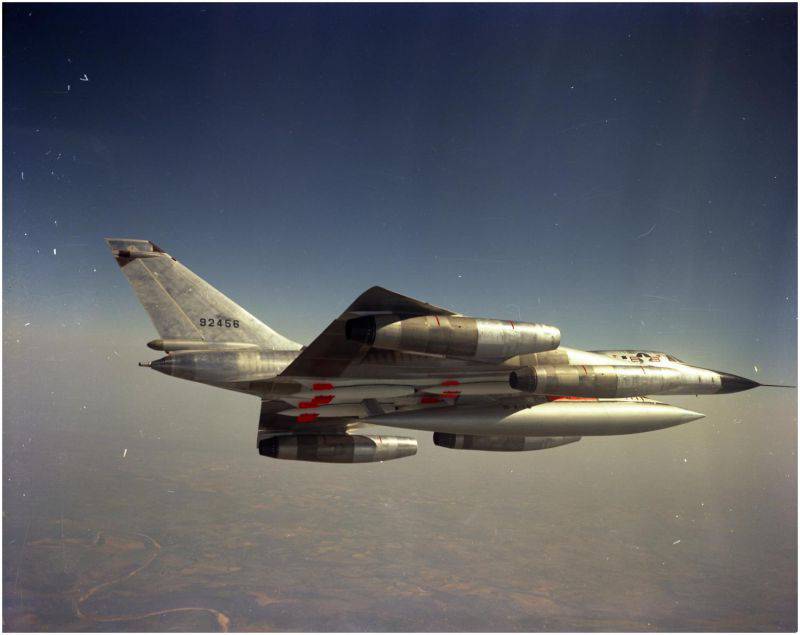
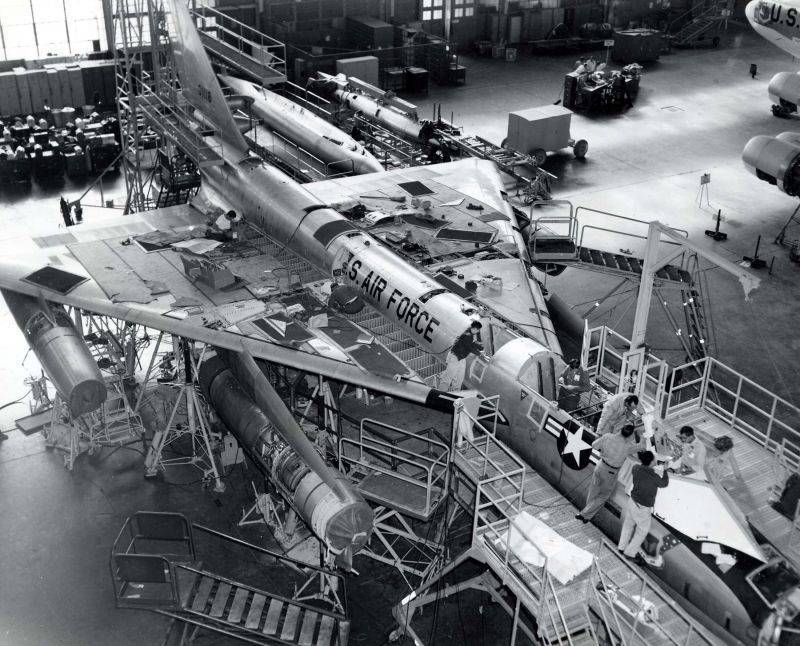
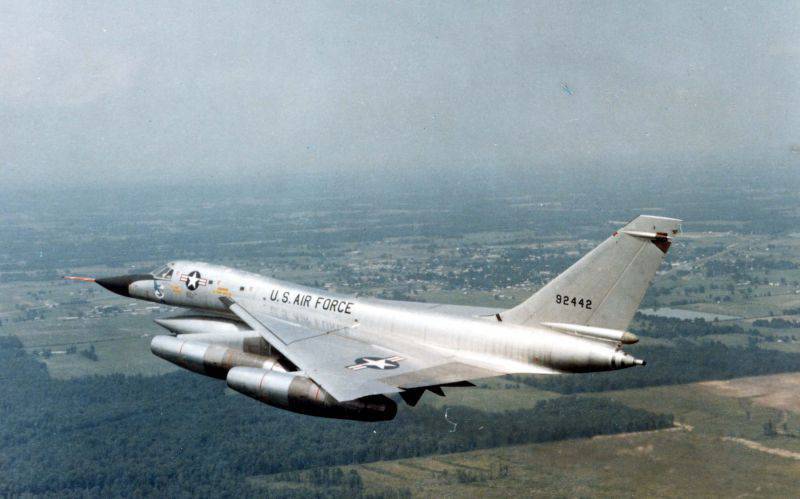
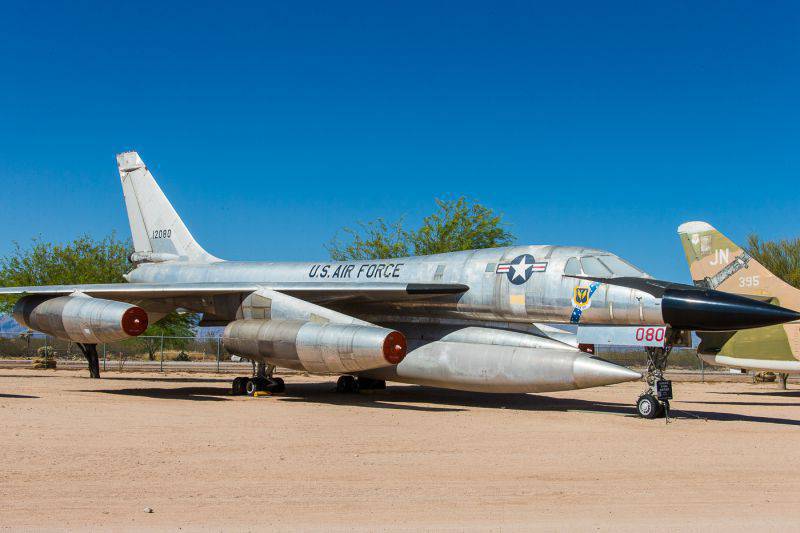
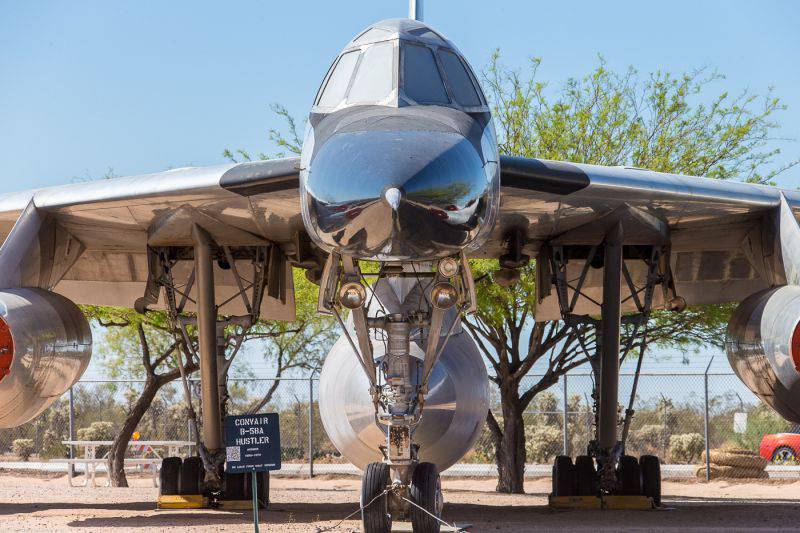
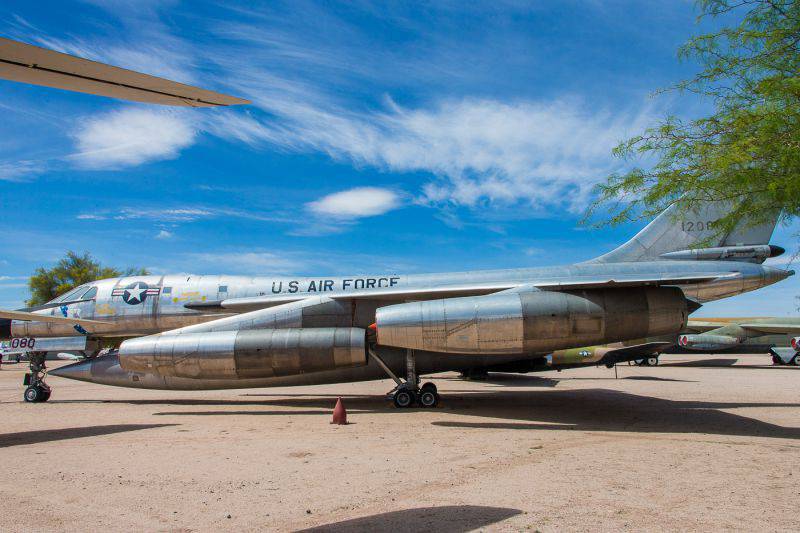
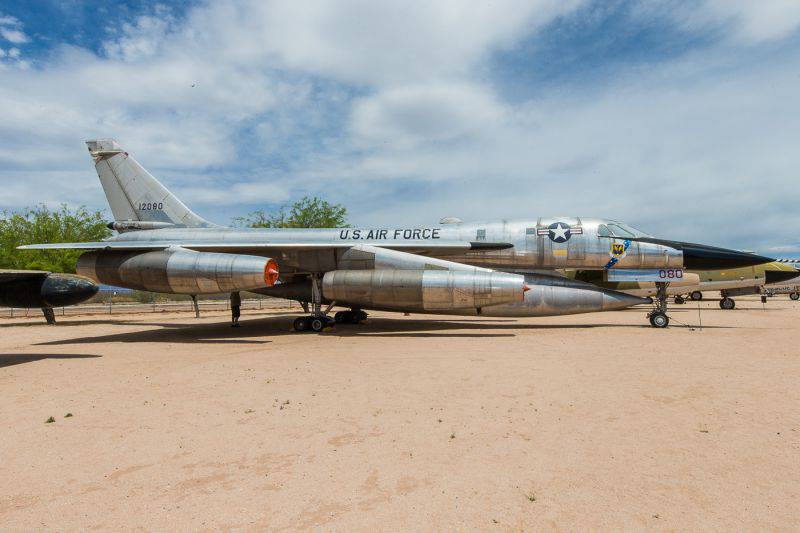
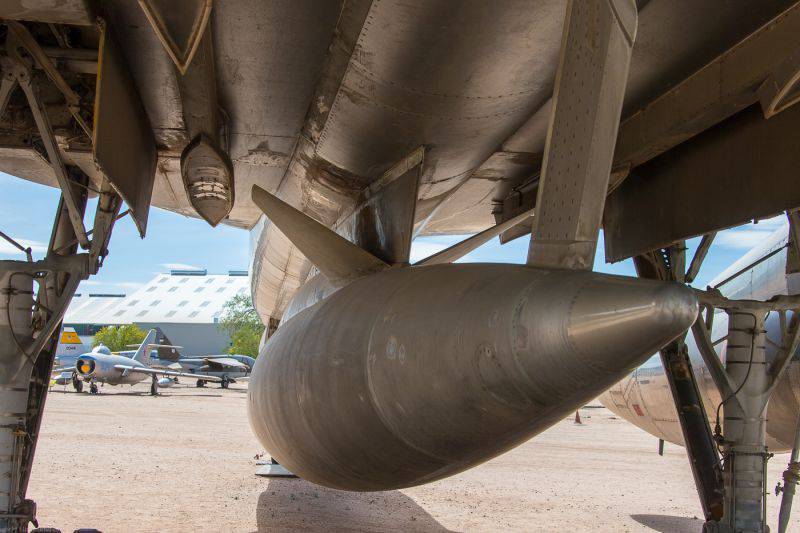
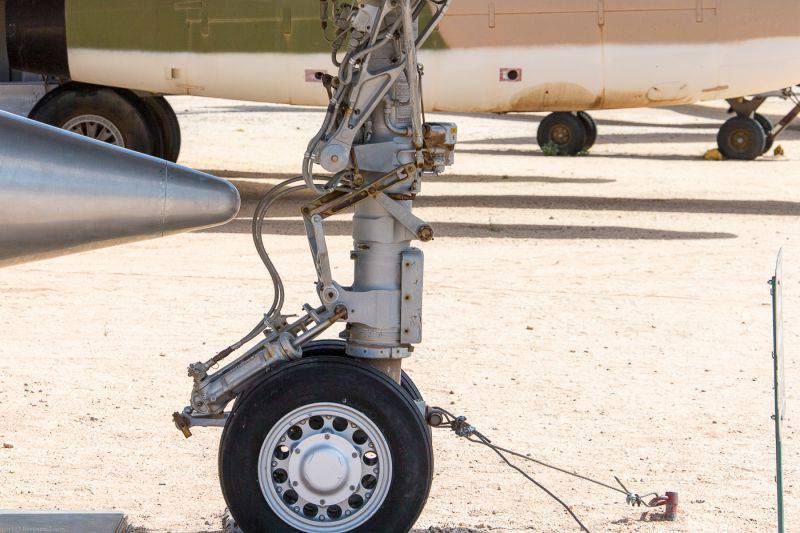
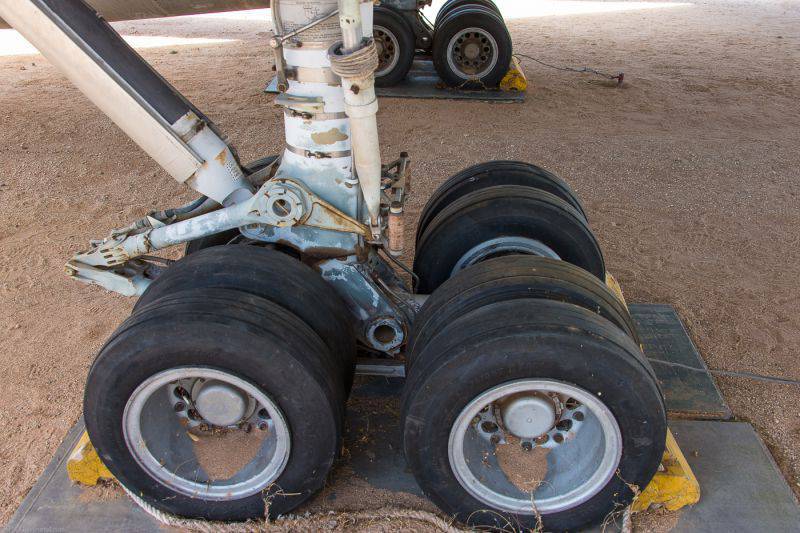
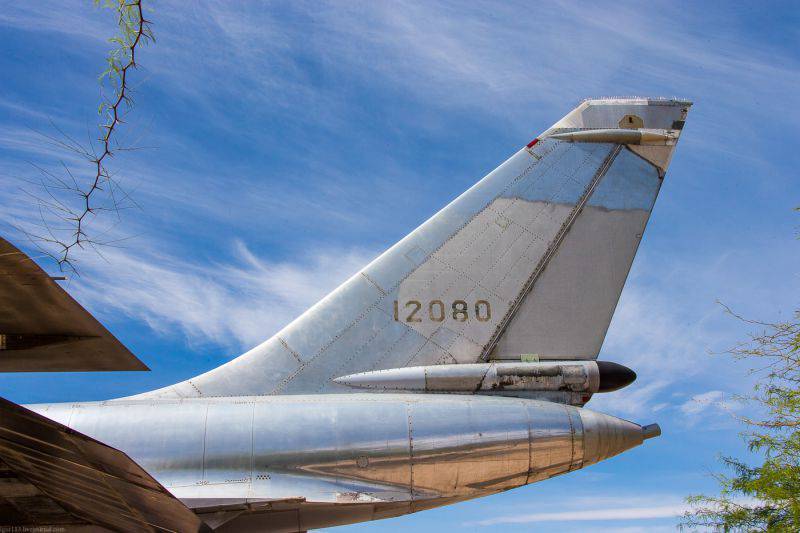
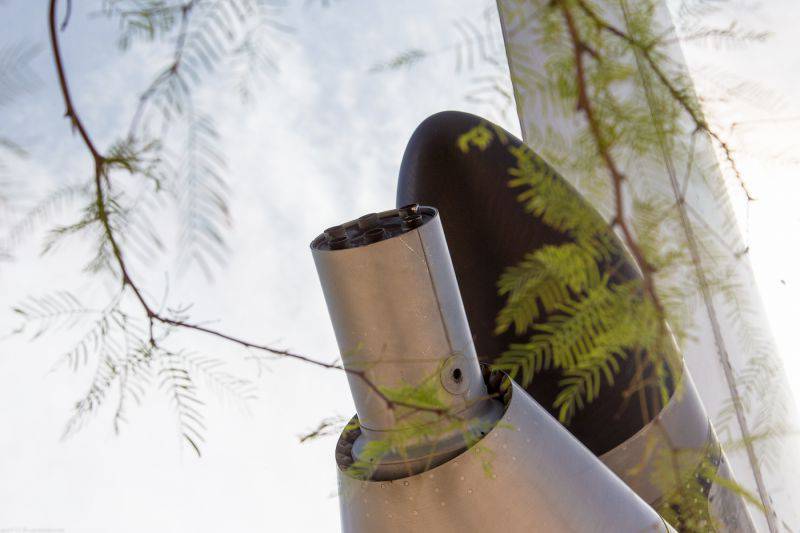
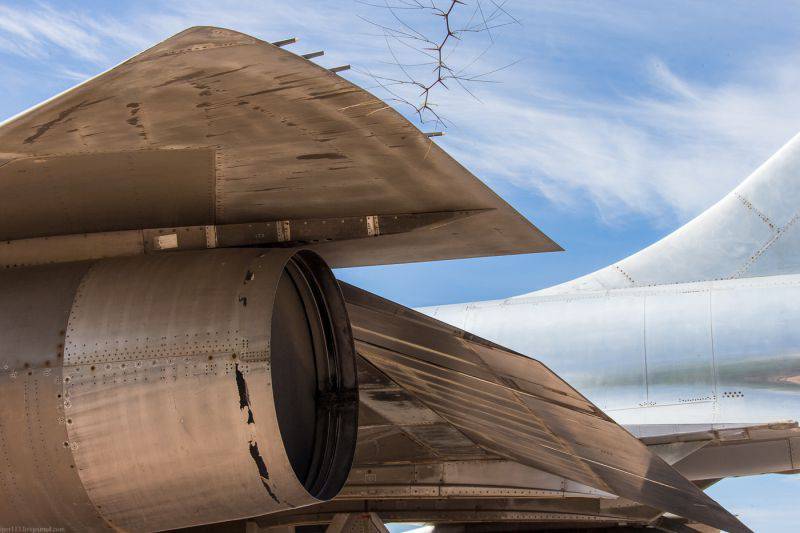
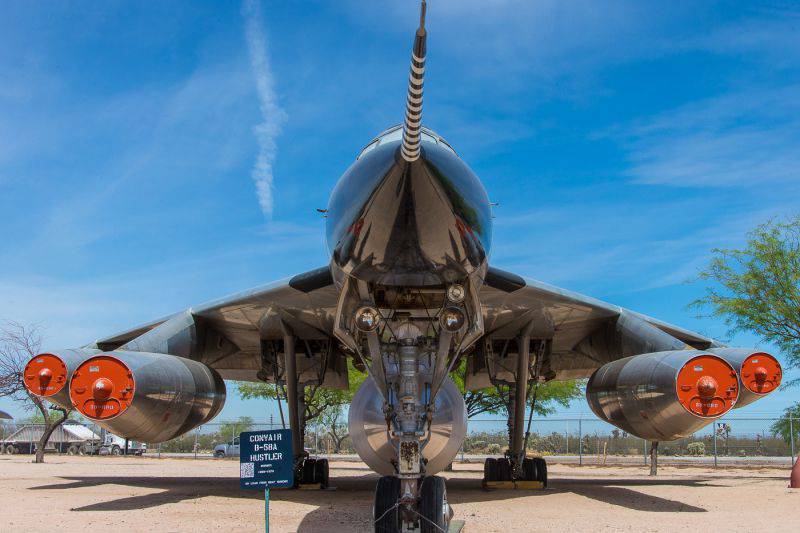
Information